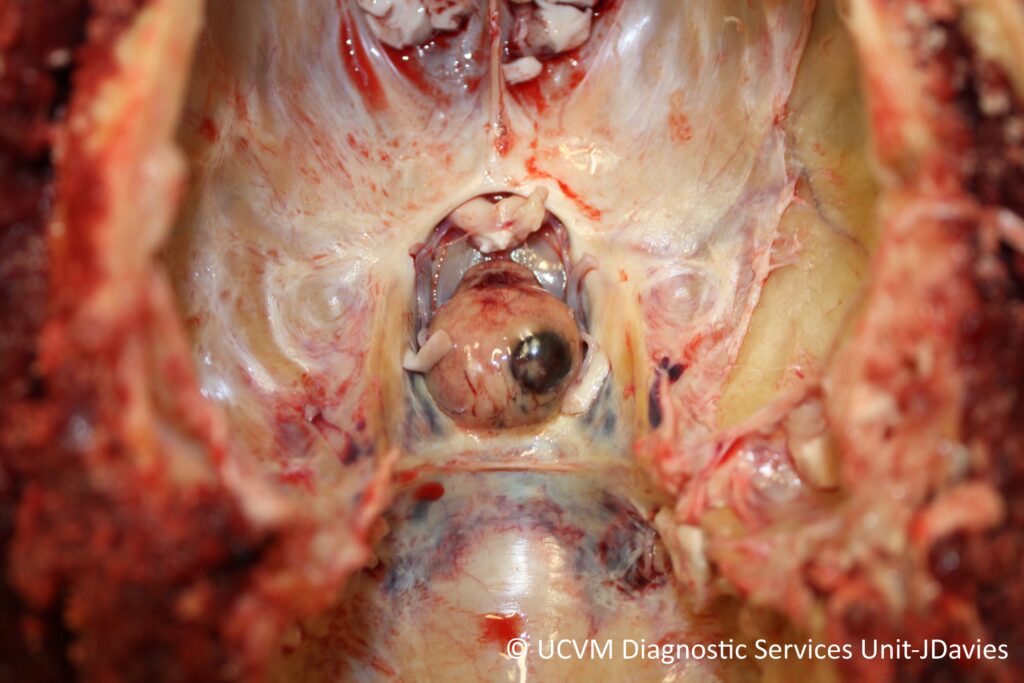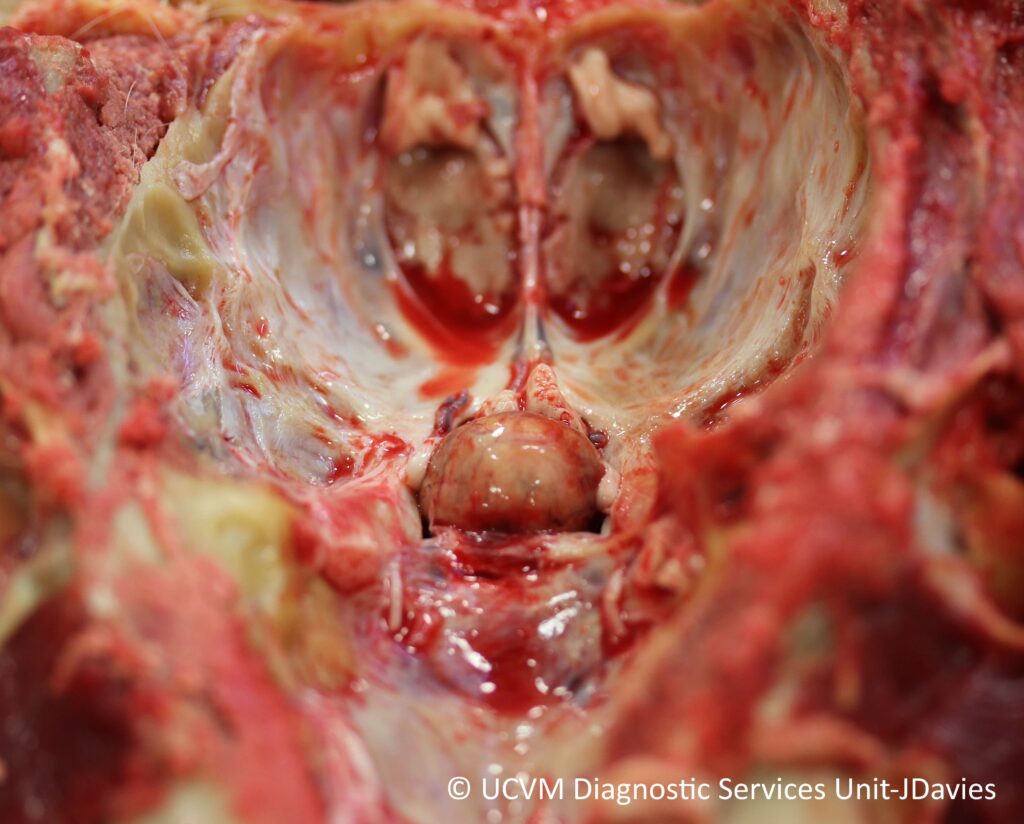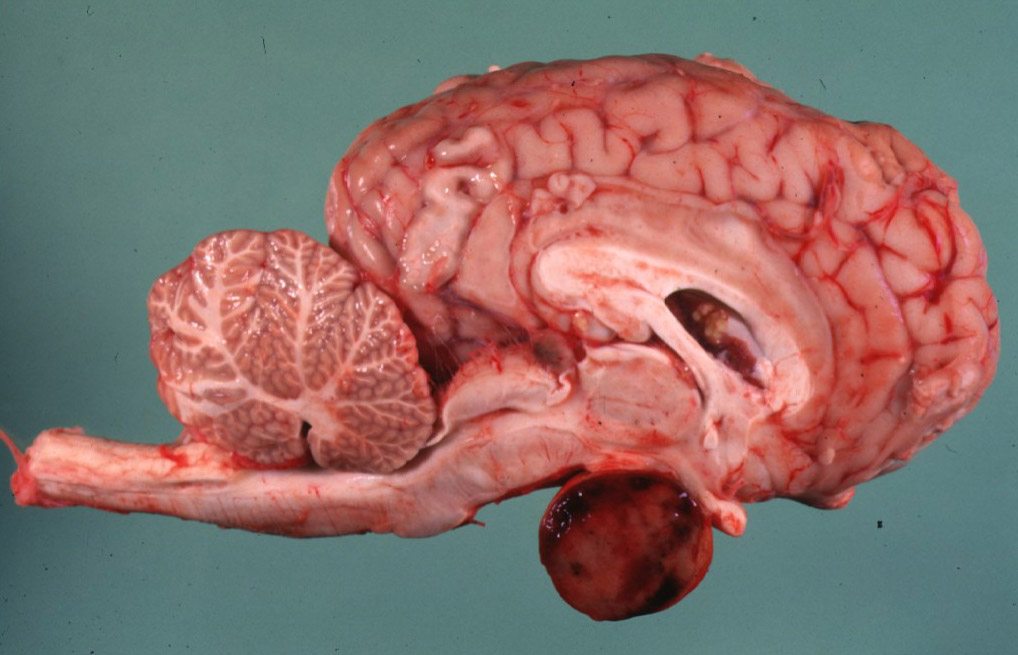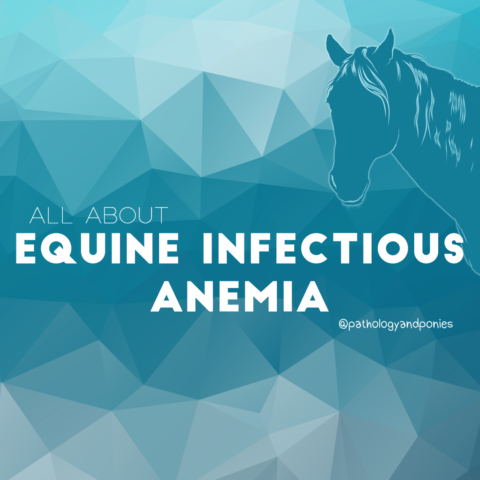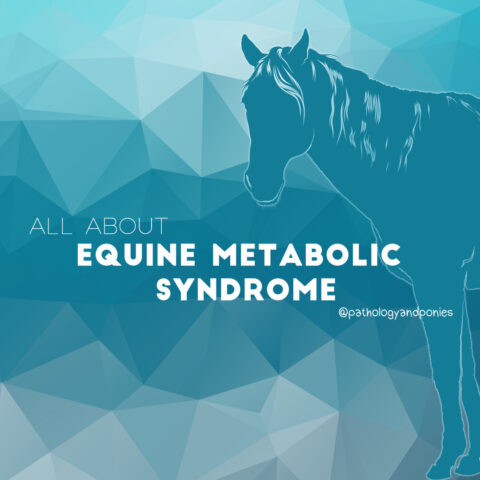Today is going to be a double path round day, since we have two related diseases to discuss! Both were a common request. This post is on 𝐩𝐢𝐭𝐮𝐢𝐭𝐚𝐫𝐲 𝐩𝐚𝐫𝐬 𝐢𝐧𝐭𝐞𝐫𝐦𝐞𝐝𝐢𝐚 𝐝𝐲𝐬𝐟𝐮𝐧𝐜𝐭𝐢𝐨𝐧 (PPID), also known as 𝐞𝐪𝐮𝐢𝐧𝐞 𝐂𝐮𝐬𝐡𝐢𝐧𝐠’𝐬.
𝐖𝐡𝐚𝐭 𝐢𝐬 𝐢𝐭?
𝐏𝐏𝐈𝐃 is an endocrine dysfunction caused by an 𝐚𝐝𝐞𝐧𝐨𝐦𝐚 (a benign tumour) in the pituitary gland of the horse. The pituitary gland’s main job is to produce hormones that control the other hormone-secreting organs, such as the adrenal glands or thyroid gland. So when it develops an adenoma, the tumour can interfere with the normal hormone production of the pituitary gland, causing issues like PPID.
𝐖𝐡𝐨 𝐠𝐞𝐭𝐬 𝐢𝐭?
This is primarily an old horse disease, usually affecting horses over 18 years of age.
𝐖𝐡𝐚𝐭 𝐜𝐚𝐮𝐬𝐞𝐬 𝐢𝐭?
As mentioned above, the primary lesion in PPID is an adenoma of the pituitary gland, specifically the 𝐩𝐚𝐫𝐬 𝐢𝐧𝐭𝐞𝐫𝐦𝐞𝐝𝐢𝐚. The pars intermedia’s main job is to take a compound called 𝐏𝐎𝐌𝐂 and convert it into compounds including 𝐚𝐝𝐫𝐞𝐧𝐨𝐜𝐨𝐫𝐭𝐢𝐜𝐨𝐭𝐫𝐨𝐩𝐢𝐜 𝐡𝐨𝐫𝐦𝐨𝐧𝐞 (ACTH), which stimulates the adrenal cortex. The pars intermedia is regulated by nerves that respond to 𝐝𝐨𝐩𝐚𝐦𝐢𝐧𝐞, so when there are high levels of dopamine, the pars intermedia reduces processing of POMC. This is called 𝐧𝐞𝐠𝐚𝐭𝐢𝐯𝐞 𝐟𝐞𝐞𝐝𝐛𝐚𝐜𝐤. In PPID, the adenoma causes degeneration of these regulating nerves, leading to uncontrolled conversion of POMC, and extremely high levels of ACTH. When ACTH acts on the adrenal glands, they produce 𝐜𝐨𝐫𝐭𝐢𝐬𝐨𝐥 (the main stress hormone), which leads to the clinical signs seen in the horse.
𝐖𝐡𝐲 𝐢𝐬 𝐭𝐡𝐢𝐬 𝐚 𝐩𝐫𝐨𝐛𝐥𝐞𝐦?
The main outcomes of PPID are 𝐩𝐨𝐥𝐲𝐮𝐫𝐢𝐚 (excessive urination), 𝐩𝐨𝐥𝐲𝐝𝐢𝐩𝐬𝐢𝐚 (excessive drinking), loss of muscle tone, 𝐥𝐚𝐦𝐢𝐧𝐢𝐭𝐢𝐬 and 𝐡𝐲𝐩𝐞𝐫𝐭𝐫𝐢𝐜𝐡𝐨𝐬𝐢𝐬 (excessive hair coat). These are all in some way related to the production of excessive POMC-derived compounds. For example, one of the compounds helps regulate the growth of a winter coat, so when it is produced in excess, affected horses think it is winter all the time, leading to hypertrichosis. These horses won’t shed in the spring, which is often the first sign of PPID for many owners. Some compounds can also contribute to increased insulin secretion, leading to 𝐢𝐧𝐬𝐮𝐥𝐢𝐧 𝐝𝐲𝐬𝐫𝐞𝐠𝐮𝐥𝐚𝐭𝐢𝐨𝐧, similar to what is seen in Equine Metabolic Syndrome (today’s other post!). Insulin dysregulation can cause chronic laminitis, which can have serious consequences for the horse’s welfare.
𝐇𝐨𝐰 𝐢𝐬 𝐢𝐭 𝐝𝐢𝐚𝐠𝐧𝐨𝐬𝐞𝐝?
PPID is diagnosed by measuring the levels of ACTH in the blood. To do this, a drug called 𝐝𝐞𝐱𝐚𝐦𝐞𝐭𝐡𝐚𝐬𝐨𝐧𝐞 that stimulates the body to reduce ACTH secretion is given to the horse. Then, blood samples are taken to measure ACTH levels. If the ACTH level goes down, then the horse likely does not have PPID. If they stay high, then there is something producing ACTH when it shouldn’t, indicating that the horse has an adenoma causing PPID.
𝐇𝐨𝐰 𝐢𝐬 𝐢𝐭 𝐭𝐫𝐞𝐚𝐭𝐞𝐝?
PPID must be treated medically, as there is no real surgical option for removing these tumours deep within the skull. To treat them, a drug called 𝐩𝐞𝐫𝐠𝐨𝐥𝐢𝐝𝐞 is used, which is a 𝐝𝐨𝐩𝐚𝐦𝐢𝐧𝐞 𝐚𝐠𝐨𝐧𝐢𝐬𝐭 (a dopamine stimulant). Remember how dopamine provides 𝐧𝐞𝐠𝐚𝐭𝐢𝐯𝐞 𝐟𝐞𝐞𝐝𝐛𝐚𝐜𝐤 on POMC conversion? By stimulating more dopamine in the body, pergolide reduces the amount of POMC that is converted, thus reducing the amount of ACTH and other compounds, and getting the body’s endocrine function back under control. Isn’t science cool?
𝐒𝐨 𝐰𝐡𝐲 𝐝𝐢𝐝 𝐲𝐨𝐮 𝐩𝐨𝐬𝐭 𝐛𝐨𝐭𝐡 𝐨𝐟 𝐭𝐡𝐞𝐬𝐞 𝐝𝐢𝐬𝐞𝐚𝐬𝐞𝐬 𝐭𝐨𝐝𝐚𝐲? 𝐓𝐡𝐞𝐲 𝐝𝐨𝐧’𝐭 𝐬𝐞𝐞𝐦 𝐬𝐢𝐦𝐢𝐥𝐚𝐫 𝐚𝐭 𝐚𝐥𝐥…
Good question! Because both diseases can cause laminitis and insulin dysregulation, and can actually occur at the same time in the same horse, some people think they are the same thing. However, they do have very different root causes and treatment plans. This is why it’s important to speak to your veterinarian about any changes you see in your horses… sometimes Dr. Google can lie to you!
𝐏𝐡𝐨𝐭𝐨𝐬
1) A horse with muscle wasting and hypertrichosis, characteristic of PPID.
2-3) An enlarged pituitary gland with a pituitary adenoma. This is the tumour that would cause all the issues! In these photos, you can see it bulging out of the 𝐬𝐞𝐥𝐥𝐚 𝐭𝐮𝐫𝐜𝐢𝐜𝐚, a boney cavern within the skull that the pituitary gland sits in.
4) A cross-section of a brain showing a large pituitary adenoma.
𝐒𝐨𝐮𝐫𝐜𝐞𝐬
Maxie, G. Jubb, Kennedy and Palmer’s Pathology of Domestic Animals, Volume 3. Sixth Edition.
Photo 1 courtesy of Wikimedia Commons.
Photos 2-3 courtesy of University of Calgary Diagnostic Services Unit.
Photo 4 courtesy of Noah’s Arkive.


